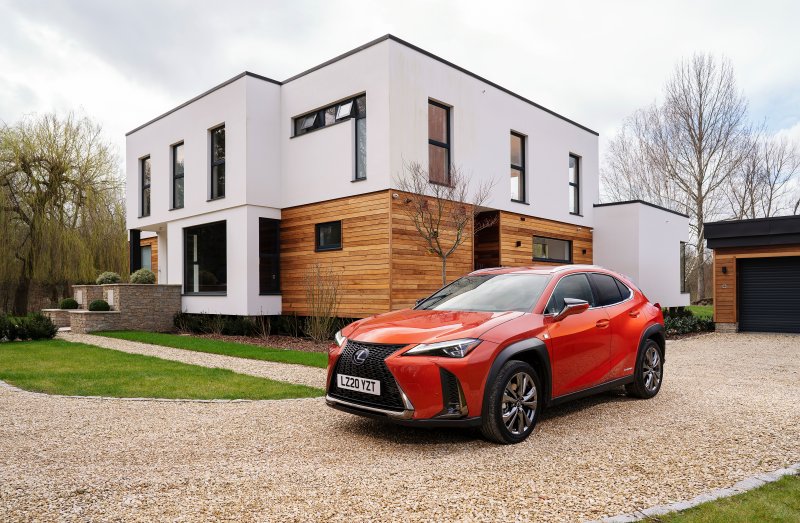LOVE it or loathe it, the government’s unquenchable thirst to reduce emissions is happening at a rapid pace and manufacturers are doing all they can to adhere to ever more stringent rules.
While bans on internal combustion engines are on the horizon, if you can’t be bothered with tedious plug-ins and want an economical, kind-to-the-environment car in the meantime, Lexus and its Toyota sister brand have the market pretty much covered.
Let’s start with Lexus, a marque synonymous with technology and a real front-runner in producing clever hybrids, remains a go-to player and having had years of success with its IS, RC and RX models, the UX is the next in its line-up set to steal sales from its German rivals.
It’s not a finicky plug-in and instead relies on its driver’s input to recharge its system which, luckily, only requires braking. Each time you use the pedal, it regenerates the battery assistance and can be used at most points until you breach motorway speeds, meaning 45mpg is easily achievable.
Whereas the saloon IS, striking RC coupe and four-by-four RX are worthy alternatives to rivals, Lexus has moved into the fiercely competitive mid-sized SUV sector, one it’s never previously dipped its toe in.
The UX250h has the very familiar powertrain - one that’s consistently done well on other models - comprising the 2.0-litre petrol engine and an electric motor, combining to produce 182bhp.
Going up against rivals such as the uninspiring-to-look-at Skoda Karoq and the admittedly brilliant Volvo XC40, the UX gets off to a flyer thanks to its styling. From the front, its gaping, honeycomb grille stands out and from the back, the tail lights set it apart.
Open the door and it’s everything you’ve come to expect from a Lexus: stylish, quality, well-built and functional. In F-Sport guise it strikes the right balance between sporty and luxury. The chunky, model-wide steering wheel remains, as does the brilliant, easy-to-use infotainment system which you control with your finger.
Press the starter button and it’s silent - you can drive using just the electric motor up to normal speeds before the 2.0-litre fires up, making stop-start traffic a cost-free experience.
It’s all very hushed and its automatic gearbox does all the work for you so it’s not the most involving of experiences at first, but it rides very smoothly and the auto goes about its business without any drama.
It’s clever stuff, there’s no doubt about it, but those who haven’t driven a hybrid before will pick up on it as the pedal tends to feel grainy, almost like the ABS isn’t working. It is, obviously, but it’s merely a trait of Lexus’ system.
When you’re up and running, it’s brilliant. The ride’s good, the steering similarly so, and the small issue of the brake pedal is soon removed from your mind.
One bugbear - a characteristic of all Lexus models - is the CVT gearbox which is far too harsh.
It’s a gearbox which has a relatively simple arrangement of two cone-shaped pulleys with a V-shaped drive belt connecting them. One pulley is attached to the engine, while the other is joined to the wheels. When you press the accelerator, the engine revs - far too highly - and the cone moves according to the amount of power asked for.
However, it’s a small gripe in an otherwise exemplary car. The £30,000 UX - in my opinion - is the best car Lexus currently make and for a first foray into an all-new sector, it’s performed a small miracle.
But what about Toyota’s latest foray into the hybrid market, the Corolla?
Having been around for a few years now, it’s clear why it’s been a hit and a much-needed return to form for Toyota in the ultra-competitive family car segment.
It’s good in every important area: it’s handsome, well-built, reliable and thoroughly modern. Like the Lexus, you also don’t have the irksome plug-in aspect, so you can simply treat it like a regular petrol car. In many ways it’s similar in set up to Toyota’s Prius, but goes without the gawky looks and somewhat geeky ownership group.
The entry-level 1.8 won’t set the world alight with its performance - 120bhp and 10.9-second dash to 60pm, just in case you were wondering - but it’s remarkably good on the commute, brisk enough and will comfortably return 50mpg without much fuss. Key to its brilliance is its ride which is supple and supreme over any long-distance jaunts. If you need more punch, there’s a 2.0-litre with 177bhp, too.
As with the UX, the only gripe is with its CVT gearbox which - no matter how hard I try - does nothing but irritate me. It’s the same in the Corolla as it is in any car it’s fitted: coarse, rough and sustained acceleration is a chore as the revs ear-splittingly soar.
There are proper plus points in the Corolla, though. It’s good-looking, still looks futuristic and its interior’s quality beats the Ford Focus. It’s got clever tech and although CVT should be ditched, it’s the only drawback in an otherwise fantastic, sub-£25,000 family car.


























